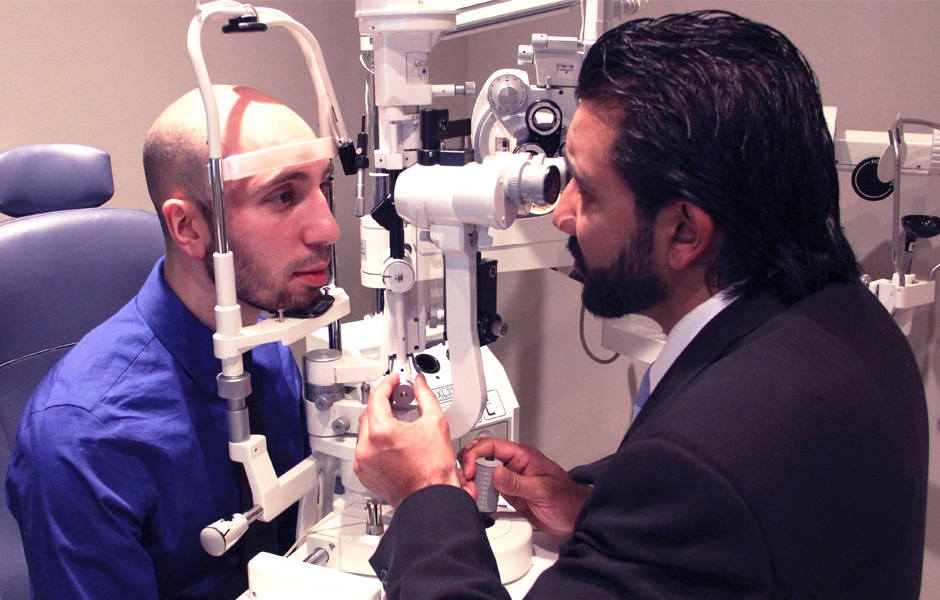Recognizing the Various Vision Modification Procedures Available for Clearer Sight
In the realm of vision correction treatments, a wide variety of options exist to attend to refractive errors and offer individuals with more clear sight. From the widely identified LASIK surgical procedure to less invasive treatments like PRK and implantable lenses, the field of ophthalmology offers a variety of methods tailored to suit different demands and preferences. Each procedure features its own collection of factors to consider, benefits, and potential threats. Comprehending the subtleties of these vision improvement techniques is important for making informed decisions concerning one's visual wellness. Let's discover the complexities of these treatments and shed light on the path to achieving enhanced vision clarity.
LASIK Surgical Treatment
LASIK surgery is an usual refractive treatment made use of to correct vision problems such as nearsightedness, farsightedness, and astigmatism. This surgical technique, which stands for Laser-Assisted in Situ Keratomileusis, intends to improve the cornea to enhance exactly how light is focused on the retina, eventually enhancing vision clarity.
One of the main benefits of LASIK surgical procedure is the fast renovation in vision experienced by individuals. Overall, LASIK surgical procedure is a prominent selection for people looking for a long-lasting service for their vision troubles.
PRK Procedure

PRK is an ideal option for people with slim corneas or those at a greater threat of eye injuries, as it does not include developing a corneal flap. The recovery process for PRK is somewhat longer contrasted to LASIK, as the epithelium requires time to restore. Patients may experience discomfort and blurred vision for a couple of days adhering to the treatment.
Despite the longer recovery time, PRK can produce excellent cause vision improvement, making it a useful choice for those that might not be ideal prospects for LASIK surgery. - Cardiologist Andalusia
Implantable Lenses
In comparison to PRK where the cornea is reshaped directly, implantable lenses provide another method for fixing vision by inserting synthetic lenses inside the eye. This procedure is particularly useful for individuals with high degrees of farsightedness, astigmatism, or nearsightedness that may not appropriate prospects for laser surgical procedures like LASIK or PRK.
Implantable lenses, additionally understood as phakic intraocular lenses, work by supplementing the eye's natural lens with an artificial one. These lenses can be positioned before the natural lens (anterior chamber) or behind the iris and before the all-natural lens (posterior chamber) By changing the power and positioning of these lenses, ophthalmologists can effectively correct refractive mistakes and improve visual skill.
One advantage of implantable lenses is that they are removable and exchangeable, offering flexibility for future changes. As with any type of surgical treatment, there are risks entailed, such as infection or cataract formation. Patients thinking about implantable lenses ought to seek advice from an eye care professional to identify one of the most appropriate option based upon their private requirements and eye health.
Corneal Rings

The procedure for inserting corneal useful content rings is minimally intrusive and reasonably fast, often carried out as an outpatient procedure. During the surgical treatment, the eye doctor makes a tiny laceration in the cornea and inserts the rings at a specific depth. Once in position, the rings assist to improve the cornea, supplying a smoother surface area for light to get in the eye, which can cause more clear vision.
Corneal rings are taken into consideration a reversible procedure, as they can be removed or replaced if necessary. While they may not completely get rid of the requirement for glasses or get in touch with lenses, corneal rings can dramatically boost vision quality and overall aesthetic convenience for people with keratoconus or various other corneal abnormalities.
Refractive Lens Exchange
Adhering to the improvement of corneal irregularities with procedures like corneal rings, another vision adjustment method that can deal with refractive errors is Refractive Lens Exchange (RLE) RLE is a medical treatment that entails changing the eye's all-natural lens with a man-made intraocular lens (IOL) to fix refractive errors such as presbyopia, farsightedness, and nearsightedness. This treatment is specifically helpful for individuals who might not appropriate prospects for procedures like LASIK or PRK due to variables such as slim corneas or high this post refractive mistakes.
RLE is similar to cataract surgical treatment, as both involve getting rid of the eye's natural lens; nonetheless, in RLE, the lens is clear, not over cast as in cataracts. The man-made lens dental implanted during RLE can be tailored to attend to the person's details refractive error, giving clear vision at different ranges. Healing time for RLE is reasonably quick, and people can expect enhanced vision not long after the procedure. Similar to any medical treatment, prospective threats and problems exist, so a comprehensive appointment with an eye care expert is crucial to identify if RLE is the appropriate vision adjustment choice.
Verdict

In the realm of vision correction treatments, a plethora of choices exist to deal with refractive errors and give individuals with clearer sight.LASIK why not try this out surgical procedure is an usual refractive procedure used to fix vision issues such as astigmatism, farsightedness, and nearsightedness.While also a common refractive procedure, the PRK (Photorefractive Keratectomy) technique varies from LASIK surgery in its strategy to fixing vision troubles.Complying with the correction of corneal abnormalities with procedures like corneal rings, an additional vision adjustment strategy that can deal with refractive mistakes is Refractive Lens Exchange (RLE) LASIK surgery, PRK treatment, implantable lenses, corneal rings, and refractive lens exchange are all alternatives that can deal with various vision issues.